Over the years we’ve experimented with different types notebooks to fit our needs. We’ve bought and used nice notebooks with hard and soft covers. (Some were too nice to even use!) They are all great, but our needs are less about the perfect paper and more about ubiquitous capture. If we have an idea, we write it down so we don’t forget. If we are trying to explain a concept, sometimes it is easier to doodle it out.

This love of notebooks and documentation lead us to experiment making our own. They aren’t fancy, but get the job done. Having something that is not sacred means it is OK to use, get worn and make mistakes. Plus, you learn a lot along the way about what you like and don’t. For awhile we experimented with only yellow pages inside our notebooks. It was easier on the eye and unique, but was it practical?
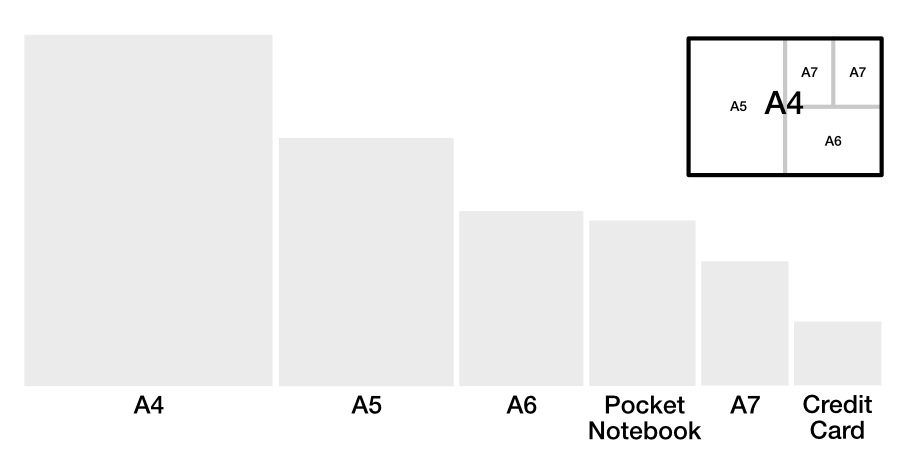
We experimented A7 “notebooks” (pocketmod.com style) from a single folded A4. A one-off for a single trip with pre-printed maps, calendar, addresses, phone numbers and plenty of space to take notes. At the other extreme, we’ve folded A3 pages down to A4-sized notebooks to use with others when collaborating. We continually look into how to connect analog notebooks into a digital workflow with special pages you can print and insert yourself. This DIY technique makes it more relevant to you, reusable, and customizable.
Different tasks suit different styles of documentation. You need a notebook for every occasion.
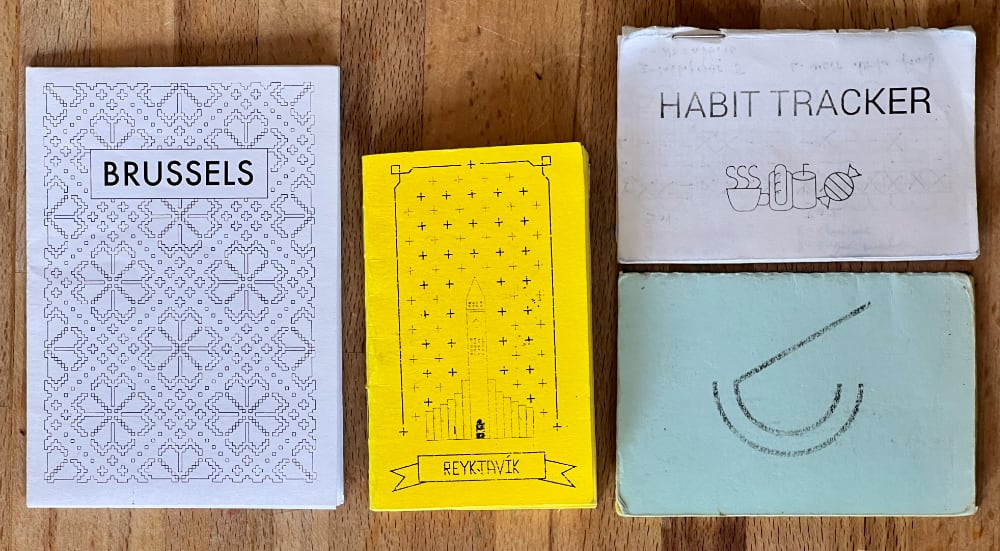
Recently, we did some traveling and attended a conference. We took along some of our prototype ideas to get feedback from other friends who would be in attendance. Even though it wasn’t our focus, those small business card notebooks were just sitting there, asking to be written on. Then came the revelation. We were using them “wrong”. We assumed that if it looks like a notebook, it opens like a notebook!
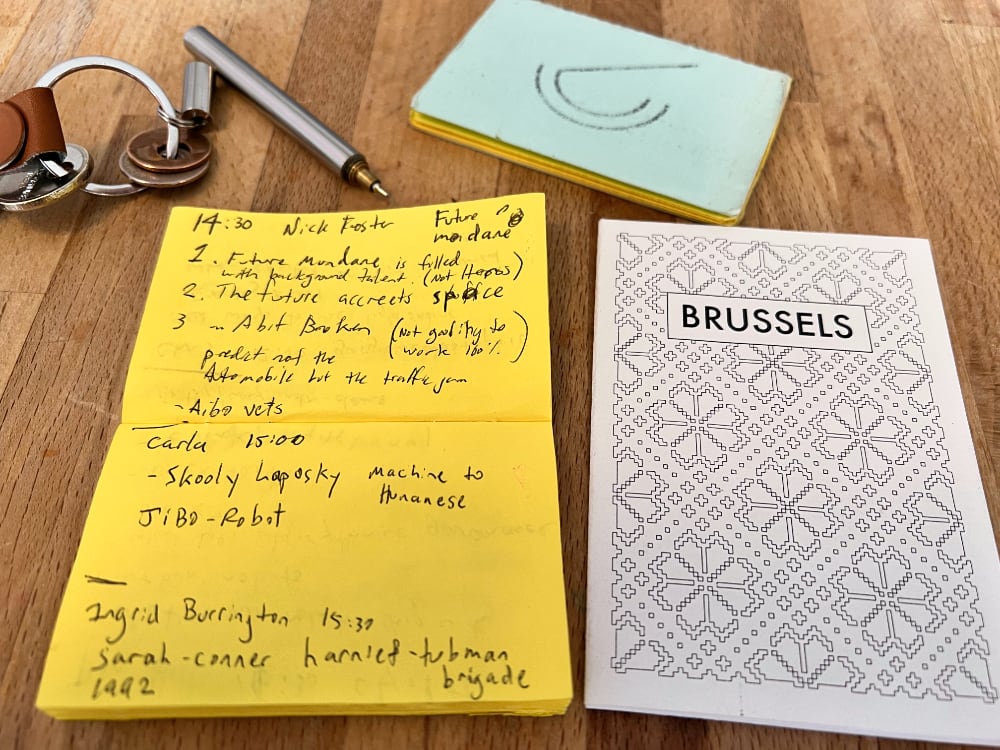
As tiny business card sized notebooks, they didn’t make any sense in the portrait orientation. You could probably fit 4-5 words of hand-writting before you ran out of space and started a new line. It felt right to turn them landscape and open them upwards. Then the business card notebook was as wide as a business card and twice as tall. Much closer to an A7 page.

We sat at the conference, scribbling notes all day long onto this tiny book. It felt really good to then close it up and put it into your wallet.
Now we’re looking into making more business card sized notebooks with designs that are specifically in landscape so it is more evident that this is the way they should be used. We are also exploring the page count. Our prototype had 32 pages, but that made the notebook a bit thick for a wallet or business card holder. Having less pages means it fits in better, but gets used-up faster. It is a trade-off that we’ll keep experimenting with.
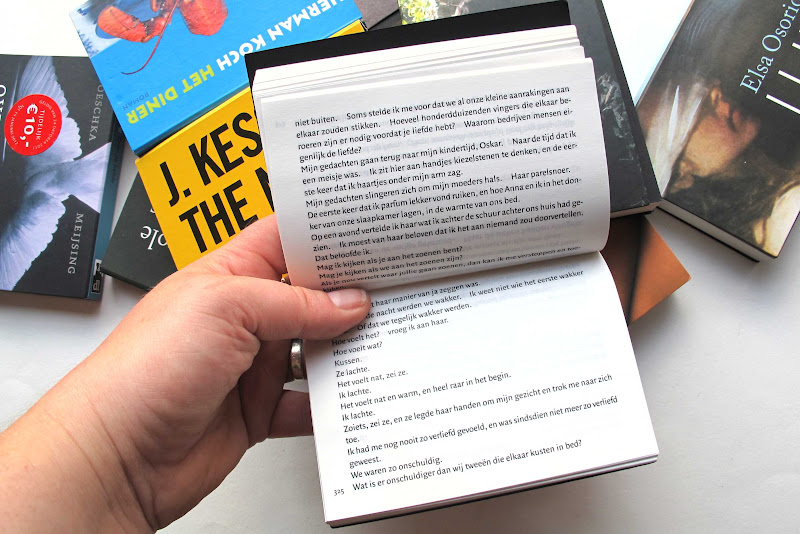
This design of opening along the spine in landscape rather than portrait isn’t new. There was a short trend to print books and short stories as landscape style books. These are called “Flapback books” and in 02011 (and again in 02018) there was a rumbling that these might be the future of print!
A Flapback Book’s main benefit was that you could more easily hold them in one-hand and read while in the other hand drinking a coffee, or laugh while eating salad. Either way, the design never really seemed to take-off, which is also something to consider for our notebooks. Other similar concepts have come and gone, so why would ours be any different?
Make your own prototypes
You make your own, you just need paper and a stapler. A standard credit card is 85.60mm × 53.98mm (3+3⁄8 in × 2+1⁄8 in) conforming to the ISO/IEC 7810 ID-1 standard. Cut several sheets of paper to be ~85mm wide and ~108mm tall, then fold in half and trim if needed, to make a credit card sized book. Finally, staple along the spine and there you go! Put as many pages in as you feel is enough and carry it around with you for a week.
The next task is to find yourself a good EDC (Every Day Carry) writing implement. Ours is the Blank Force EDC Ink pen.
Artisanal Letterpressed Notebooks.
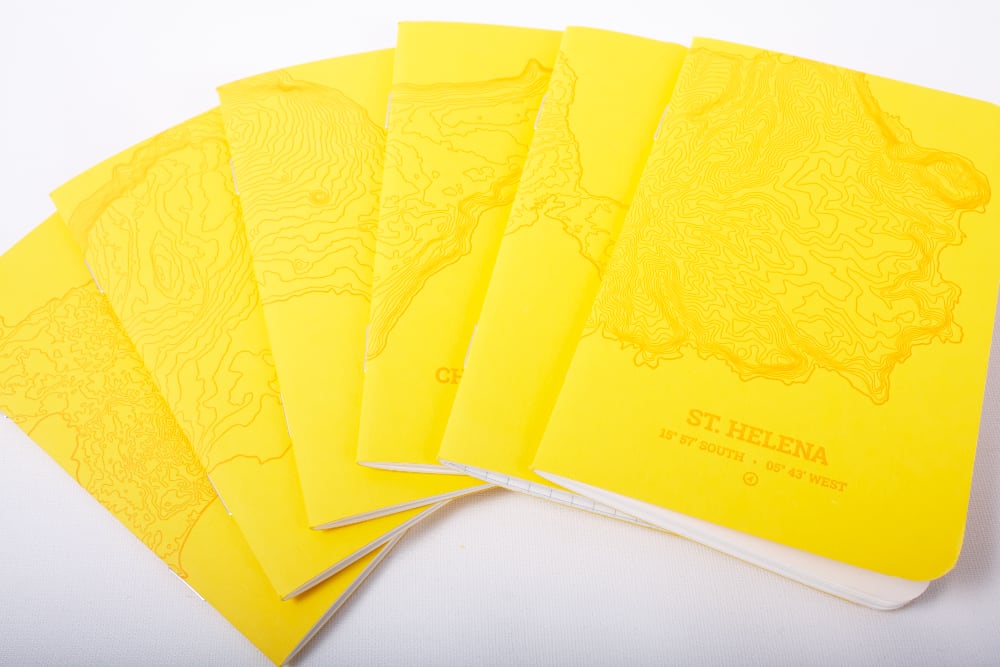
Our love of notebooks lead us to create a small side-project called Analog.is It started with a kickstarter project in 02014 where we created a series of beautiful letter pressed notebooks of various islands from around the world. It is a series of 6 islands, plus 1 intrasteller Martian island.
It has always been our goal to grow the collection, but logistics of physical things is very different than digital ones. (Me shakes fist at the Icelandic Postal Service.)